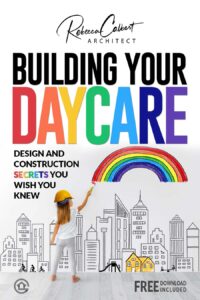Forget a brand refresh, let’s do a germ audit!
Its always great to spruce up your school. Look around and consider how things look to prospective parents and children when they come in the door. Is the look of your school consistent with the curriculum and philosophy of your business? Are the walls damaged and scuffed and in need of fresh paint? Or is the paint and wall finished so outdated the building could be used as a 1980’s movie set? These items and more are all taken into consideration when deciding to go through our brand refresh package.
But there’s something even more important than how your school looks appearance wise.
The more important question is, “Is it clean?”
Sure, you clean the classrooms and the toys as mandated by the health department and childcare licensing. I’m not doubting that for one minute. What I’m suggesting are all the subtle things that you can change around your school to lower the risk of spreading germs. Now, I’m not suggesting this list will prevent the spread of germs, that’s unrealistic. But there are steps you can take, as a daycare owner or school administrator keep your building cleaner.
Three easy ways to stop the spread of germs in your school.
Seal the grout. Restrooms have tile floors and the tile itself isn’t porous. But what about all that grout in between the tiles? It’s porous! Run your finger along it, feel the rough surface that captures all kinds of micro-organisms. Sprinkle water on it. Does the water soak in, or does it bead up? If it beads up, great, your tile is already sealed. But, if the water soaks in, so does everything else. And I mean everything. Every sneeze, cough, dirty accident… you know what I mean, you get the picture. The easy answer is to seal the grout. It’s a simple process, there are spray on products at every home improvement store. Its an easy and inexpensive fix.
Ditch the forced-air hand dryers. Yes, you heard me right. The touch-less hand dryers in your restrooms that you think are clean because they are hands-free are actually not the cleanest way to dry your hands. There’s actually been scientific studies that prove that these dryers circulate the dirty air from within the restroom and blow it directly on to your clean hands. Not to mention, your clean face and clothing as well. Solution? Take down the dryers and install a simple paper towel dispenser. Yes, that means you’ll have to constantly refill the paper towel holders, but it is the more sanitary solution. Keep it simple, use paper towels.
Install foot operated door hardware. This one’s a little tricky because you probably have door levers on all of your doors. The reality is that you don’t really need levers on all of those doors. Over half of all school doors do not need a lever. Sure, they need a lock to lock up at night, but during the day, it isn’t really needed. Take your office for example. Sure, it needs to be locked when you aren’t there, to protect privacy. But during the day, as people come in and out to talk to you, it stays unlocked. Switch out your locking door lever for a pull handle and a bolt lock, similar to what you probably have on the front door of your house. Then add a toe-pull device like this one at the bottom of the door. Public restrooms don’t have locks on the entry door to begin with, so all that’s needed is a toe-pull at the base of the door. For $40 you can prevent the need for people to touch the restroom door when leaving the restroom. That’s $40 well spent.
Do more than just incorporate these items. You need to spread the word. Tell your teachers what your doing and how it helps. Explain to your parents how you are being as proactive as you can. Educate them on your decisions so that they understand that you are looking out for their well-being and the well-being of the children in your care.
Make it a talking point when touring new clients through the building. Point out to them that the tile grout is sealed so that germs don’t congregate in the tiny cracks of the restrooms. Explain to them that you use paper towels and the reason why. Don’t just tell them about the toe hardware you installed at the bottom of your doors; show them and teach them and the kids how to use it.
We can’t build a germ-free building, but we can build trust in each other and our communities, one small actionable step at a time.
Design Your Center Today: When students are trying to learn, or toddlers are trying to nap, something as simple as a drafty room can really distract their young minds. There are plenty of great ways to incorporate bright daylight and fresh air into school classrooms.
-This article was written by Rebecca Calbert.
Rebecca is a licensed architect with over 30 years of experience. She owns and operates an architectural firm, Calbert Design Group, and educates her clients through the commercial real estate development process with online content at SaveOnBuilding.com. Rebecca’s “purpose” is to educate small business owners and protect them from what they don’t know.


